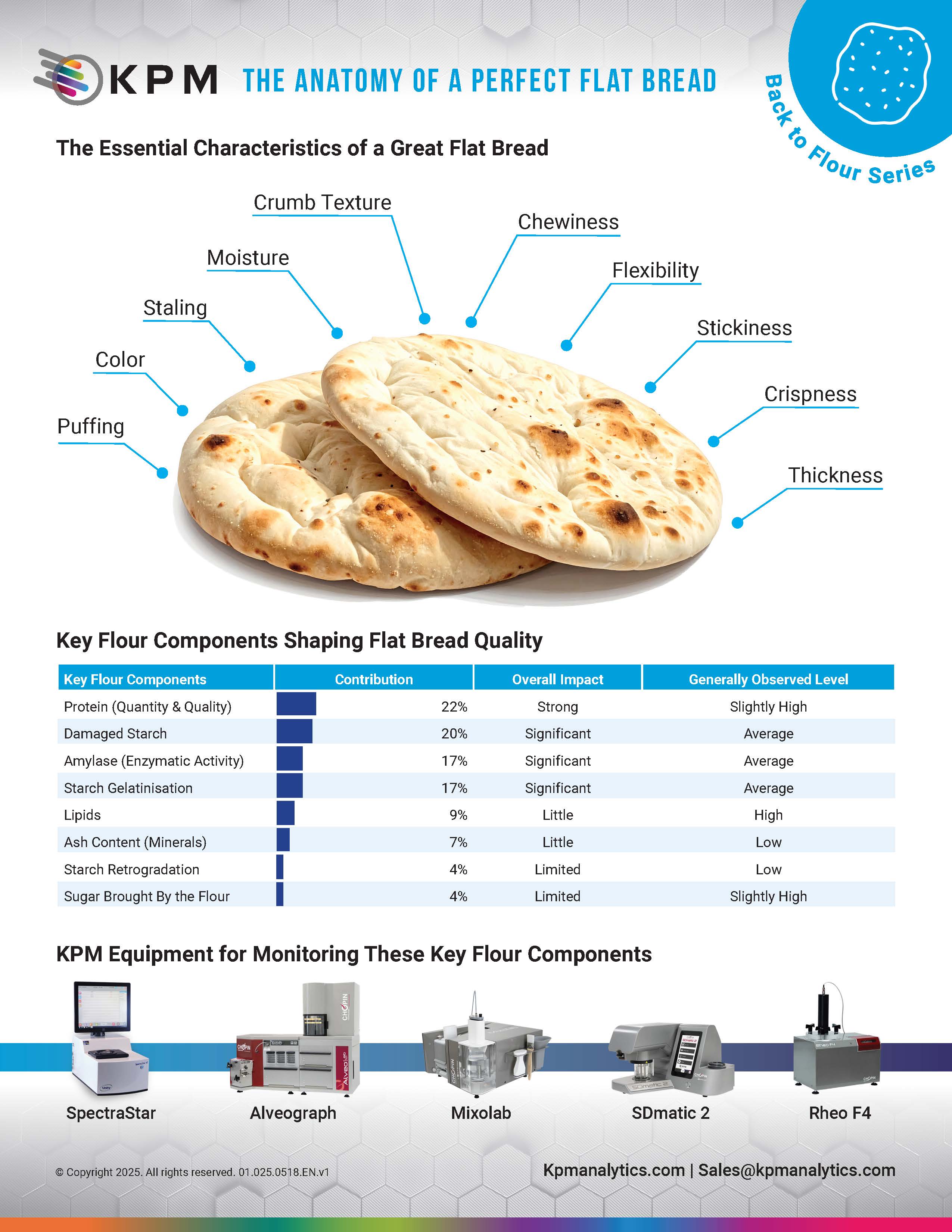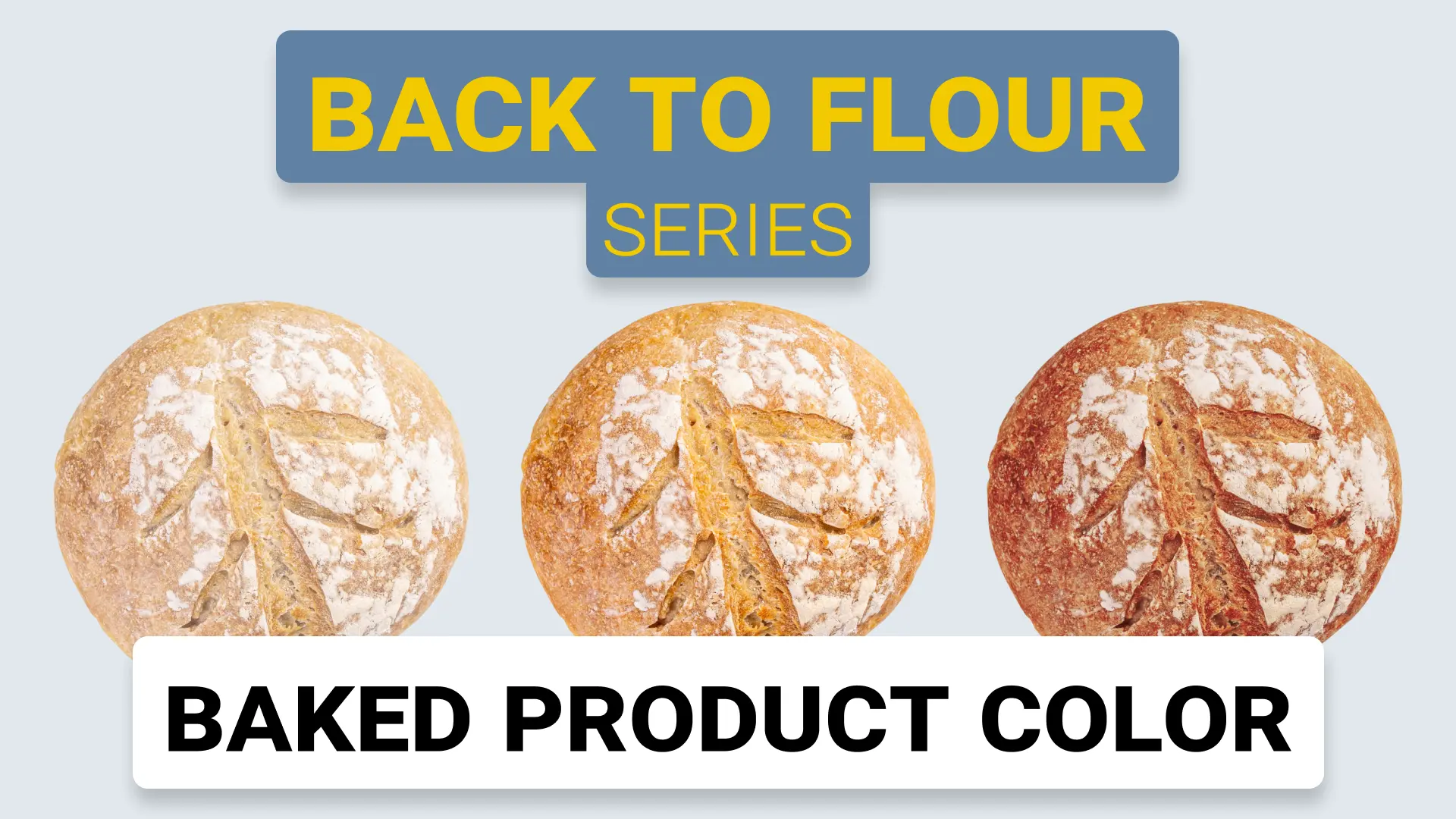Flat Bread: Balancing Flexibility and Texture

The Flat Bread: Thin, Soft, and Technically Precise
Flat bread quality depends on achieving the perfect balance between flexibility, chewiness, and thickness. The best flat breads puff just enough during baking to create soft internal layers while maintaining an even, lightly browned surface.
A great flat bread combines color, puffing, thickness, crispness, stickiness, flexibility, chewiness, crumb texture, moisture, and resistance to staling. Each attribute plays a role in product performance and consumer appeal. The dough must stretch easily without tearing, stay soft after baking, and resist drying out during storage. Proper formulation and flour control are key to maintaining this balance.
Because the formulation of flat breads is typically very simple (often just flour, water, and salt), the quality and functionality of the flour play a decisive role.
At the Table – Discover the “Flat Bread” Video
In the Back to Flour Series, the At the Table video dedicated to flat bread highlights how key sensory attributes, softness, elasticity, flexibility, and puffing, depend on the final product type (thin and flexible or thicker and layered flat breads), as well as on flour properties (and process control).
- Color & Surface – baking creates distinctive patterns: from evenly golden tones to darker spots typical of well-baked flat breads.
- Puffing & Thickness – controlled expansion defines internal structure: slight for thin, flexible breads and more developed for thicker, layered ones.
- Crispness & Flexibility – balance between crust formation and interior moisture; thin breads remain pliable, thicker ones stay soft yet structured.
- Crumb Texture & Chewiness – fine, uniform structure ensures softness and elasticity without stickiness.
- Moisture & Staling – proper hydration keeps products supple and prevents drying or cracking over time.
These attributes are directly shaped by flour composition: proteins, damaged starch, enzymatic activity (amylases), starch gelatinization, lipids, ash content, starch retrogradation and sugars.
A Quick Overview of Flat Bread Anatomy
Alongside the video, we provide a PDF guide, part of the At the Table series. It offers a concise snapshot of:
- The customer-desired attributes for pan bread.
- The key flour components that help shape them.
📄 Download the PDF: The Anatomy of a Perfect Flat Bread

What’s Next?
This focus on Sponge Cake is part of the Back to Flour Series, which connects flour functionality to finished product quality across all bakery segments. By understanding how flour composition drives texture, softness, and stability, bakers can fine-tune performance for consistent, high-quality results.
The Back to Flour Series is constantly growing—with videos, technical PDFs, and resources across At the Table, Transformation of Dough, Secrets of Flour, and more technical insights to come.
Explore the categories below and stay tuned as we continue to connect flour functionality with product excellence.
Other Posts in the Series
Related Blog Posts

















